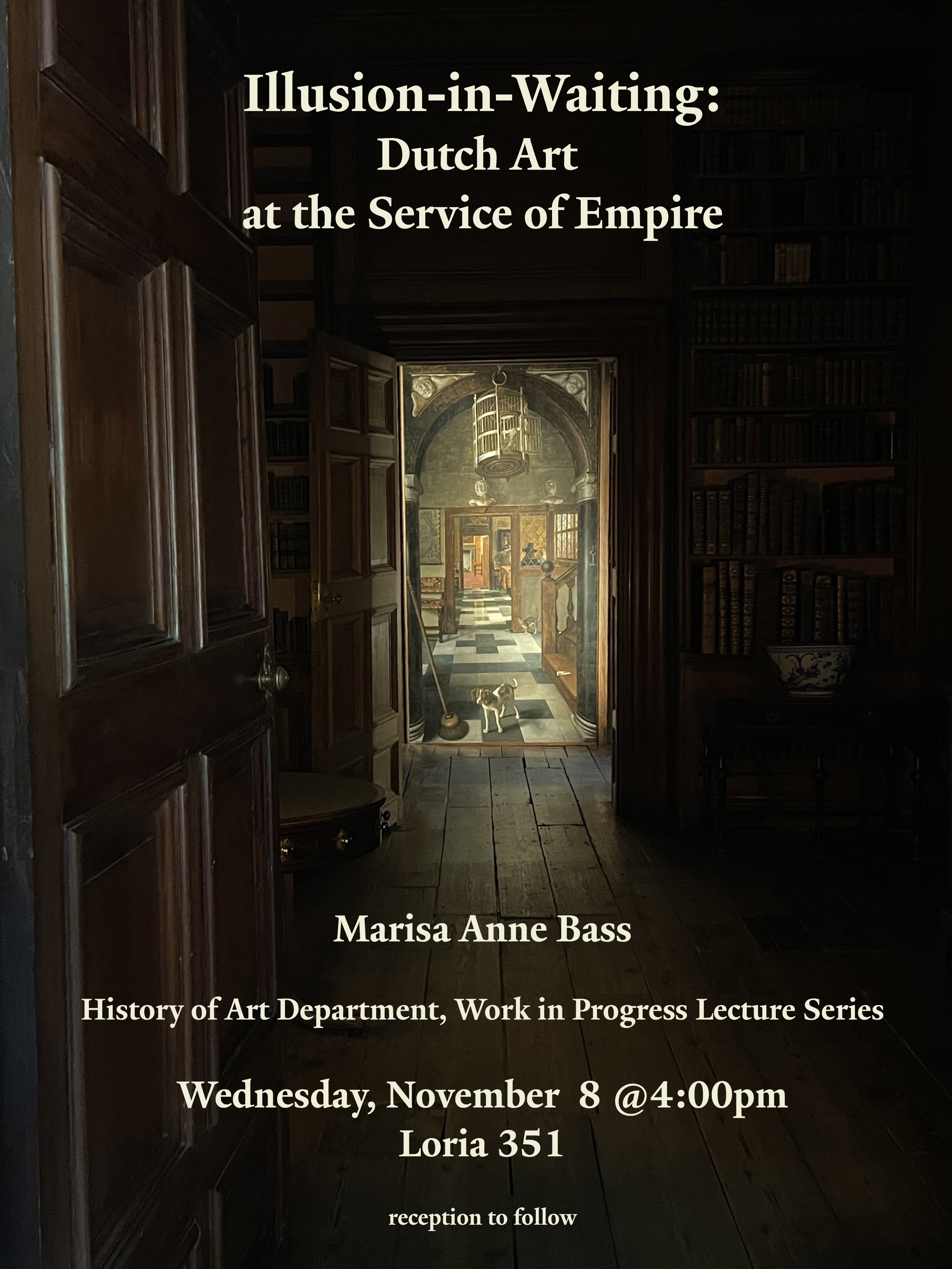WiP Lecture Series: Illusion-in-Waiting: Dutch Art at the Service of Empire
Wednesday, November 8, 2023 - 4:00pm to 5:30pm
Loria 351
190 York Street
06511
New Haven
, CT
See map: Google Maps
Connecticut
In his treatise on the art of painting, Samuel van Hoogstraten makes a deceptively simple statement about perspectival illusions. “Paintings of this kind,” he observes, “are very much bound to the places for which they are made.” Only by securing a place of privilege for a painted illusion, van Hoogstraten tells us, can an artist guarantee its enduring effect.
This lecture takes van Hoogstraten’s remark as a starting point for reconsidering the work that illusionistic painting did in England at the dawn of British imperialism. Its focus is on one place in particular: the home of William Blathwayt (1649–1717) at Dyrham Park in Gloucestershire, where van Hoogstraten’s doorway-sized “View through a House” has been installed since the late seventeenth century. Remarkably, the painting has never been analyzed in relation to the ‘roomscapes’ at Dyrham Park itself. Located two hours west of London, the country house that Blathwayt built in the classical style and augmented with a Dutch formal garden is also home to several other illusionistic works that formed part of his collection. These works include a second perspective view by van Hoogstraten, a dummy board of a maidservant, and a pair of tables supported by veristically polychromed sculptures of Black Africans kneeling in chains. As Secretary of the Lords of Trade and Plantations, Blathwayt was among the early architects of colonies like Jamaica and the Leeward Islands. The creation of Dyrham Park, in other words, was inextricable from the history of the slave trade and the exploitation of the Americas.
Treated in isolation, van Hoogstraten’s “View through a House” looks like any other Dutch genre painting and much like the artist’s other works. Treated in the context of Dyrham Park, it looks like something else entirely. Contrary to extant accounts, Blathwayt’s investment in illusion was about more than the distinct English taste for Dutch art born under William III’s reign, or a scientific interest in perspective fueled by the Royal Society’s investigations. Van Hoogstraten’s painting and its companion works at Dyrham Park were also about binding people to place and putting people in their place. To understand van Hoogstraten’s success in England, we have to understand what he so clearly understood: that the effect most desired by his patrons was the instantiation of their power over others.
Admission:
Free
Open To:
General Public
2034322669

